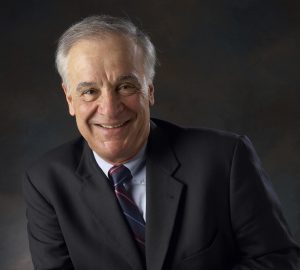New Effective Drug for Kids and Teens with T2D
First major success for Pediatric Diabetes Consortium


We spoke with William Tamborlane, MD, (bio) Professor of Pediatrics (Endocrinology); Chief, Pediatric Endocrinology at Yale School of Medicine about the ELLIPSE trial, a large international study in 80 centers in 25 countries, whose results were just published in the New England Journal of Medicine.
This was the first study that involved centers who were part of the Pediatric Diabetes Consortium which was co-founded in 2009 by Dr. Tamborlane.
New treatment options desperately needed
“Type 2 diabetes is on the rise in children and teens, but treatment options for pediatric patients are extremely limited compared to those available to adults.
- Metformin and insulin are the only drugs currently approved for the treatment of children and teens with T2D.
- In adults, the treatment options include metformin, DPP-4 Inhibitors, GLP-1 agonists or analogues, SGLT2 Inhibitors, plus Insulin.
“Despite being the most popular initial pediatric treatment for T2D, metformin often leads to an early loss of blood sugar control within 12-18 months of treatment given the aggressive course of T2D in adolescents compared to adults.
Insulin, the next in line treatment, is difficult for most youth with type 2 diabetes to use effectively to lower their blood-sugar levels — they don’t take it, they don’t adjust their dose, they gain weight, they don’t like to take more than 1 or 2 injections per day, etc.
The risks are high. Early-in-life T2D diagnosis at 20 or younger can reduce life expectancy by a decade or more.
See research and related article.
Study Results
Liraglutide was the drug tested in this trial. It is already approved for sale in the US to adults with T2D under the brand name Victoza.
“The year-long clinical trial focused on the effect of liraglutide on the blood sugar and glycated hemoglobin (or A1c) levels of a diverse, international sample of 135 participating young people aged 10-16 with type 2 diabetes who were already taking metformin with or without insulin.
- For those with type 2 diabetes, 7% is the magic number for A1c levels; anything below that means the condition is relatively well-controlled.
- One half of the study group took metformin plus liraglutide and the other half took metformin plus placebo. The researchers took the blood sugar and A1c levels of the participants after six months and one year.
- By six months, blood sugar was substantially lower in the liraglutide group than the placebo group, and the liraglutide group had A1c levels 1.06 percentage points lower than the placebo group.
- After one year, the liraglutide group had A1c levels 1.3 percentage points lower than the placebo group, which actually experienced an average 0.8 percentage point increase.
- By the end of the trial, nearly two-thirds of the liraglutide group had A1c levels under the 7.0% goal compared to just one-third of the placebo group who met that target. Liraglutide also proved to be safe and have only minimal gastrointestinal side effects during the course of the trial.”
Novo Nordisk, the drug company that developed a brand-name form of liraglutide, provided funding for this study.
Implications for Patients and Parents
This is transformational for treatment of T2D in kids,” said Dr. Tamborlane. “We now have a therapy that will actually work given the realities of people’s lives.”
“When you are on metformin, you will continue to gain weight and your situation will get worse, even though your blood sugars are temporarily under better control.
“Liraglutide plus metformin resulted in some weight loss and stabilized patient blood sugars while the group that only got metformin gained weight and their HbA1c got worse.
This gap in outcomes was apparent at 6 months and the gap widened by 12 months even though not all patients got the maximum dose of liraglutide.
- The normal practice for liraglutide is to start with .6mg daily, then increase to 1.2mg after a week, then to the max of 1.8 mg.
- In this study, we left people at the lower dose if their blood sugar was stable.
Pediatric Diabetes Consortium
The ELLIPSE trial was the first major success for the Pediatric Diabetes Consortium. Members are pediatric endocrinologists who mostly work in academic centers in the US. They organized the consortium to make it easier to complete pediatric trials for drugs already approved for adults.
The trial began in 2012 and it took more than four years to recruit all 135 participants. During this period, consortium members coordinated their work via monthly phone calls to discuss patient recruiting, challenges they were finding, solutions from other centers, etc.
The ELLIPSE trial is the first pediatric trial to complete since the metformin trial in 1999. Based on the success of this trial, two additional trials are underway with the Pediatric Diabetes Consortium.
Study Authors
William Tamborlane, M.D. was the first author. Other authors include Margarita Barrientos-Pérez, Udi Fainberg, Helle Frimer-Larsen, Mona Hafez, Paula M. Hale, Muhammad Y. Jalaludin, Margarita Kovarenko, Ingrid Libman, Jane L. Lynch, Paturi Rao, Naim Shehadeh, Serap Turan, Daniel Weghuber, and Timothy Barrett.
Sources
- YaleNews Release
- Novo Nordisk Statement
- New England Journal of Medicine article
- Sattar N, Rawshani A, Franzén S, et al. Age at diagnosis of type 2 diabetes mellitus and associations with cardiovascular and mortality risks: findings from the Swedish National Diabetes Registry. Circulation2019; Epub ahead of print.





